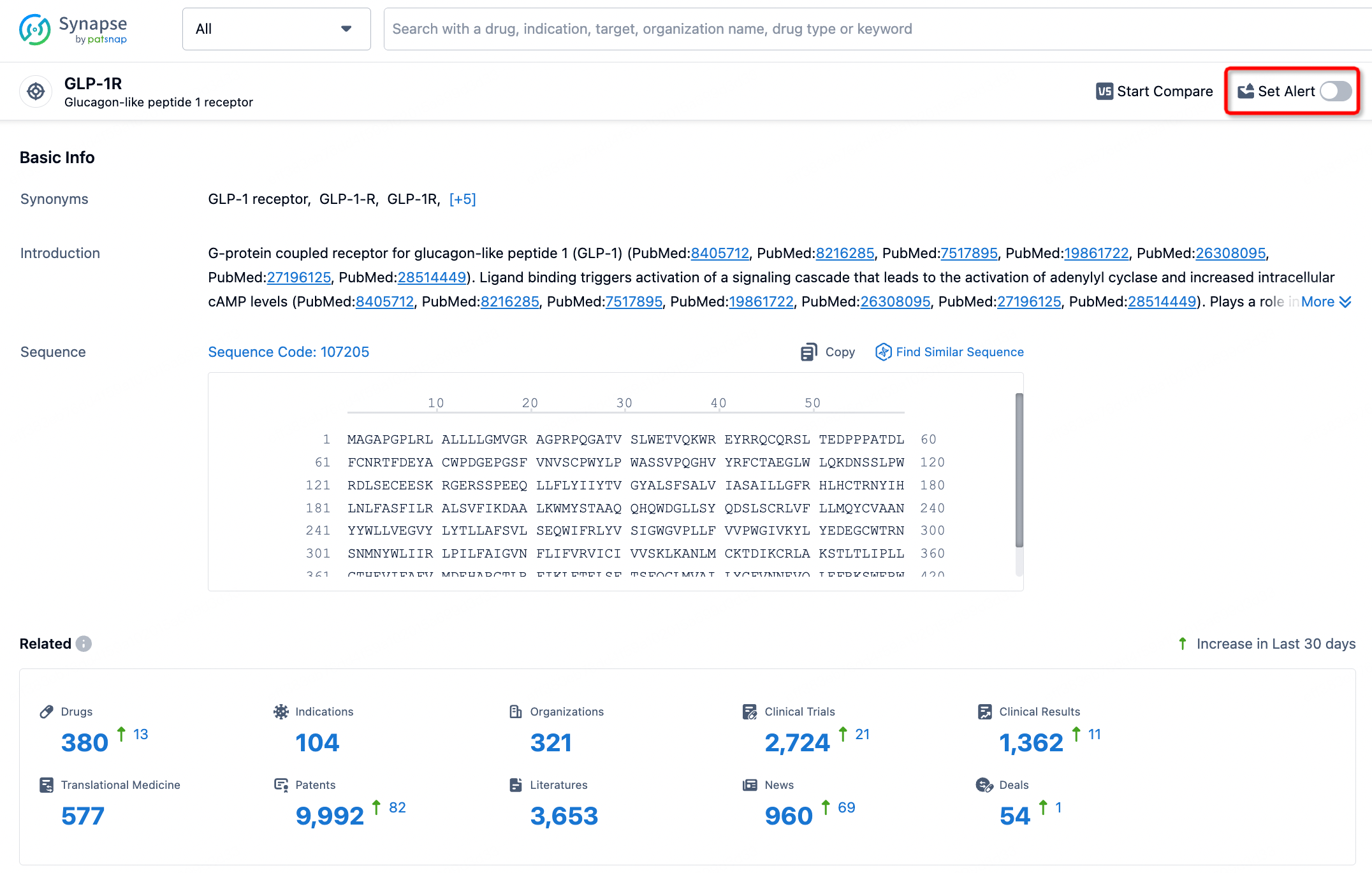Request Demo
What are ENPP1 inhibitors and how do they work?
21 June 2024
ENPP1 inhibitors are emerging as a significant focus in biomedical research and drug development due to their potential therapeutic applications across a range of diseases. To understand their importance, it’s essential to delve into what ENPP1 is, how these inhibitors work, and what conditions they might help treat.
Ectonucleotide pyrophosphatase/phosphodiesterase 1 (ENPP1) is an enzyme that plays a crucial role in regulating various physiological processes, including mineralization of bones and tissues, insulin signaling, and cellular communication. ENPP1 catalyzes the hydrolysis of nucleotide triphosphates to monophosphates and pyrophosphate. This activity is integral to controlling levels of extracellular nucleotides and pyrophosphate, molecules that have diverse roles in human biology. Importantly, dysregulation of ENPP1 activity has been implicated in several pathological conditions, making it a compelling target for therapeutic intervention.
ENPP1 inhibitors function by blocking the activity of the ENPP1 enzyme, thereby modulating the levels of its substrates and products in the extracellular space. These inhibitors typically bind to the active site of the enzyme, preventing it from catalyzing the breakdown of nucleotide triphosphates. By inhibiting ENPP1, these compounds can reduce the production of pyrophosphate, a molecule that can inhibit mineralization and calcification processes. Additionally, by controlling nucleotide levels, ENPP1 inhibitors can influence signaling pathways that are crucial for cell proliferation, differentiation, and other functions.
The mechanism of action of ENPP1 inhibitors can be intricate, as it involves interfering with the enzyme’s ability to interact with its substrates. Some inhibitors are designed to mimic the natural substrates of ENPP1, binding to the enzyme in a competitive manner. Others may bind to allosteric sites, inducing conformational changes that reduce the enzyme’s activity. The specificity and potency of these inhibitors are crucial for their effectiveness and safety, as off-target effects could lead to unintended consequences.
ENPP1 inhibitors are being explored for their potential in treating a variety of medical conditions. One of the most promising applications is in the management of calcification disorders. For instance, in conditions like Generalized Arterial Calcification of Infancy (GACI) and pseudoxanthoma elasticum (PXE), overactivity of ENPP1 leads to excessive pyrophosphate production, which in turn inhibits proper tissue mineralization and promotes pathological calcification. By inhibiting ENPP1, it may be possible to restore the balance of pyrophosphate and normal mineralization processes, alleviating symptoms and preventing disease progression.
Another significant area of research is the role of ENPP1 in metabolic disorders. ENPP1 has been implicated in insulin resistance, a key feature of type 2 diabetes. Overexpression or hyperactivity of ENPP1 can interfere with insulin signaling pathways, leading to reduced glucose uptake by cells and elevated blood glucose levels. By inhibiting ENPP1, researchers hope to improve insulin sensitivity and glycemic control in individuals with type 2 diabetes, offering a novel approach to managing this widespread condition.
In the field of cancer research, ENPP1 inhibitors are being investigated for their potential to disrupt tumor growth and metastasis. Certain cancers exploit ENPP1 activity to evade immune surveillance and support tumor growth through altered nucleotide signaling. By inhibiting ENPP1, it may be possible to counteract these mechanisms, enhancing the effectiveness of existing cancer therapies and improving patient outcomes.
In summary, ENPP1 inhibitors represent a promising frontier in therapeutic development, with potential applications in calcification disorders, metabolic diseases, and cancer. As research progresses, these inhibitors may offer new hope for patients with conditions that currently have limited treatment options. The future of ENPP1 inhibitor therapy is bright, and ongoing studies will undoubtedly continue to expand our understanding of their mechanisms and therapeutic potential.
Ectonucleotide pyrophosphatase/phosphodiesterase 1 (ENPP1) is an enzyme that plays a crucial role in regulating various physiological processes, including mineralization of bones and tissues, insulin signaling, and cellular communication. ENPP1 catalyzes the hydrolysis of nucleotide triphosphates to monophosphates and pyrophosphate. This activity is integral to controlling levels of extracellular nucleotides and pyrophosphate, molecules that have diverse roles in human biology. Importantly, dysregulation of ENPP1 activity has been implicated in several pathological conditions, making it a compelling target for therapeutic intervention.
ENPP1 inhibitors function by blocking the activity of the ENPP1 enzyme, thereby modulating the levels of its substrates and products in the extracellular space. These inhibitors typically bind to the active site of the enzyme, preventing it from catalyzing the breakdown of nucleotide triphosphates. By inhibiting ENPP1, these compounds can reduce the production of pyrophosphate, a molecule that can inhibit mineralization and calcification processes. Additionally, by controlling nucleotide levels, ENPP1 inhibitors can influence signaling pathways that are crucial for cell proliferation, differentiation, and other functions.
The mechanism of action of ENPP1 inhibitors can be intricate, as it involves interfering with the enzyme’s ability to interact with its substrates. Some inhibitors are designed to mimic the natural substrates of ENPP1, binding to the enzyme in a competitive manner. Others may bind to allosteric sites, inducing conformational changes that reduce the enzyme’s activity. The specificity and potency of these inhibitors are crucial for their effectiveness and safety, as off-target effects could lead to unintended consequences.
ENPP1 inhibitors are being explored for their potential in treating a variety of medical conditions. One of the most promising applications is in the management of calcification disorders. For instance, in conditions like Generalized Arterial Calcification of Infancy (GACI) and pseudoxanthoma elasticum (PXE), overactivity of ENPP1 leads to excessive pyrophosphate production, which in turn inhibits proper tissue mineralization and promotes pathological calcification. By inhibiting ENPP1, it may be possible to restore the balance of pyrophosphate and normal mineralization processes, alleviating symptoms and preventing disease progression.
Another significant area of research is the role of ENPP1 in metabolic disorders. ENPP1 has been implicated in insulin resistance, a key feature of type 2 diabetes. Overexpression or hyperactivity of ENPP1 can interfere with insulin signaling pathways, leading to reduced glucose uptake by cells and elevated blood glucose levels. By inhibiting ENPP1, researchers hope to improve insulin sensitivity and glycemic control in individuals with type 2 diabetes, offering a novel approach to managing this widespread condition.
In the field of cancer research, ENPP1 inhibitors are being investigated for their potential to disrupt tumor growth and metastasis. Certain cancers exploit ENPP1 activity to evade immune surveillance and support tumor growth through altered nucleotide signaling. By inhibiting ENPP1, it may be possible to counteract these mechanisms, enhancing the effectiveness of existing cancer therapies and improving patient outcomes.
In summary, ENPP1 inhibitors represent a promising frontier in therapeutic development, with potential applications in calcification disorders, metabolic diseases, and cancer. As research progresses, these inhibitors may offer new hope for patients with conditions that currently have limited treatment options. The future of ENPP1 inhibitor therapy is bright, and ongoing studies will undoubtedly continue to expand our understanding of their mechanisms and therapeutic potential.
How to obtain the latest development progress of all targets?
In the Synapse database, you can stay updated on the latest research and development advances of all targets. This service is accessible anytime and anywhere, with updates available daily or weekly. Use the "Set Alert" function to stay informed. Click on the image below to embark on a brand new journey of drug discovery!
AI Agents Built for Biopharma Breakthroughs
Accelerate discovery. Empower decisions. Transform outcomes.
Get started for free today!
Accelerate Strategic R&D decision making with Synapse, PatSnap’s AI-powered Connected Innovation Intelligence Platform Built for Life Sciences Professionals.
Start your data trial now!
Synapse data is also accessible to external entities via APIs or data packages. Empower better decisions with the latest in pharmaceutical intelligence.


